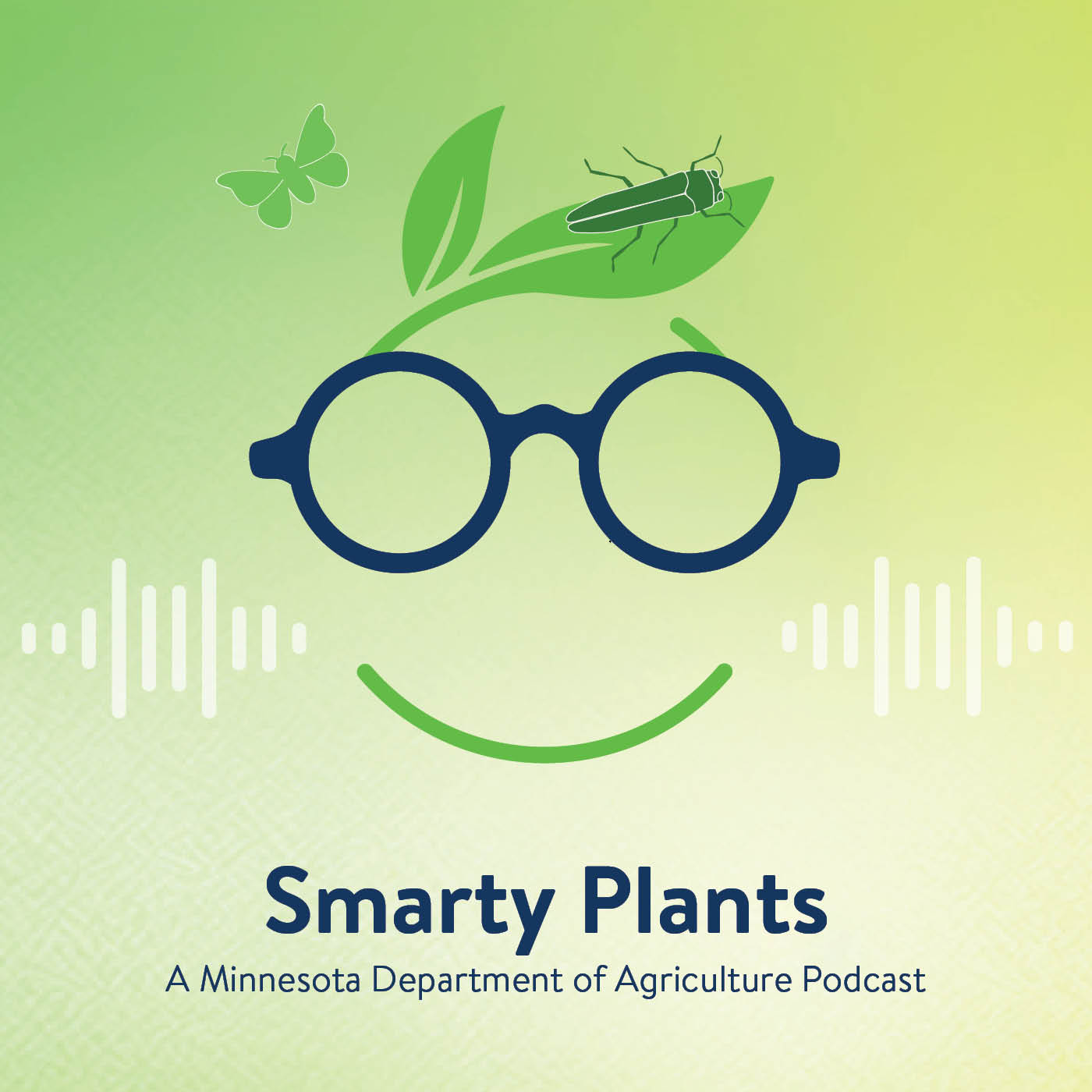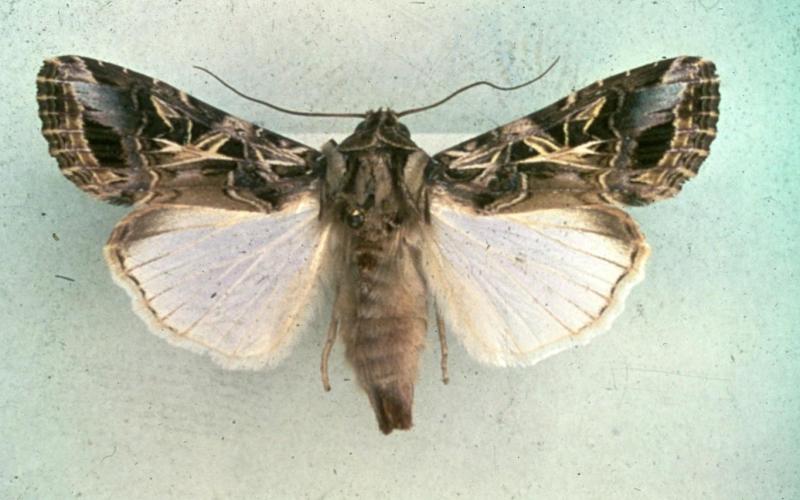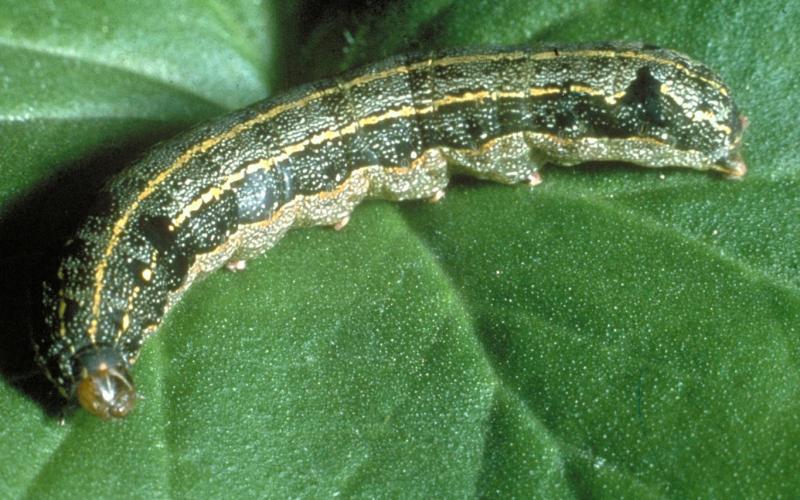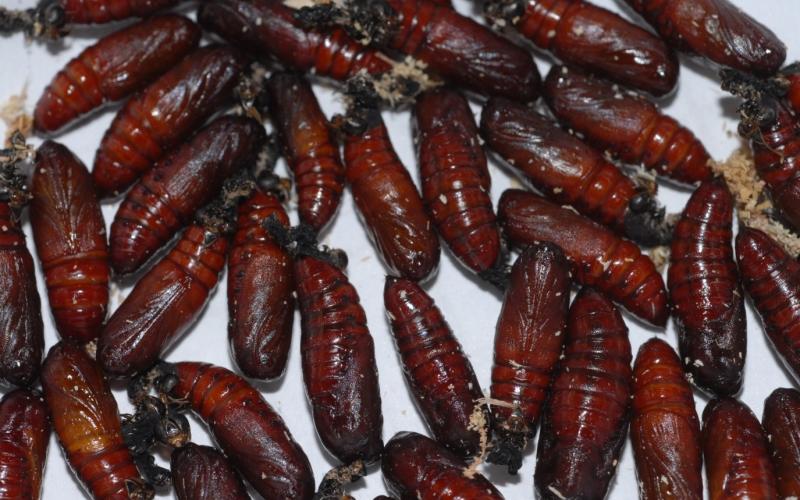Scientific name: Spodoptera littoralis Boisduval
Native range: Africa, southern Europe, and the Middle East
At Risk
The Egyptian cottonworm feeds on more than 80 plant species across over 40 plant families, including vegetables, fruits, and ornamental crops. In Minnesota, crops that could be affected include soybean, alfalfa, corn, apples, grapes, beets, potatoes, and some ornamental poplars and pines.
Distribution
Spodoptera littoralis is not currently found in the United States, but it has been intercepted 65 times at U.S. ports of entry since 2004. It was once detected in greenhouses in Ohio in the 1980s but was successfully eradicated.
Immature stages of Egyptian cottonworm are commonly spread through international trade on:
- Planting material
- Cut flowers
- Vegetables
- Other imported commodities
If established, the moth could also spread to new areas through adult flight.
Biology
Female moths lay masses of eggs on the underside of young leaves. The eggs are coated with scales from the female’s abdomen. Once hatched, caterpillars feed on leaves and also may feed on stems, buds, flowers and fruits.
Pupation takes place just below the soil surface in a clay-like cocoon. In its native range, the Egyptian cottonworm produces multiple generations per year.
Identification
The Egyptian cottonworm can easily be mistaken for other Spodoptera species native to the United States, many of which are commonly found in Minnesota. Proper identification requires adult moth specimens and an experienced entomologist.
Signs of infestation include the presence of eggs masses covered in fuzzy, hairy scales, or the presence of larvae on plants, and feeding damage. Leaves damaged by Egyptian cottonworm will have holes or skeletonized tissue.
Adult Egyptian cottonworm forewings are gray to reddish-brown with pale lines along the veins. The hindwings are grayish white and iridescent with gray margins and no dark veins. The wingspan is about 1¼ to 1½ inch.
Larvae are 1½ - 1¾ inches long with color that varies from blackish gray to dark green, turning reddish brown or yellowish white. They have light longitudinal bands and two dark, semicircular spots on their backs.
Regulatory Status: Regulated
If the Egyptian cottonworm were discovered in Minnesota, federal and state regulations would likely be implemented. These may include restrictions on the movement of infested materials, as well as measures to suppress or eradicate infestations.
What Can I Do?
The MDA monitors for Egyptian cottonworm through trap-based surveys in corn, soybeans, and vegetables as part of our commodity and pathways surveys. Contact the MDA via Report a Pest if you believe you have an Egyptian cottonworm infestation.
Smarty Plants Podcast
 Discover Smarty Plants, the Minnesota Department of Agriculture's podcast that digs into the fascinating world of invasive species. Join expert guests as they share insights and solutions to protect our environment and agricultural resources. Visit Smarty Plants and start listening today.
Discover Smarty Plants, the Minnesota Department of Agriculture's podcast that digs into the fascinating world of invasive species. Join expert guests as they share insights and solutions to protect our environment and agricultural resources. Visit Smarty Plants and start listening today.





